Setup E-Mail aliases in Gmail to send e-mail from custom domain
Gmail enables sending of e-mails with alias, which means that gmail can be sent on behalf of the custom domain setup with registrars such as GoDaddy or Google Domains.
Below is a detailed step-by-step instruction of setting up the alias for sending e-mail as service without the need of using any additional 3rd party services.
Setting up application
The first step for enabling the alias is setting up the 2-step verification and app passwords.
Navigate to Google Accounts.
{ width=250 }
Select the security tab and enable 2-Step Verification option. Follow the guide to setup the settings.
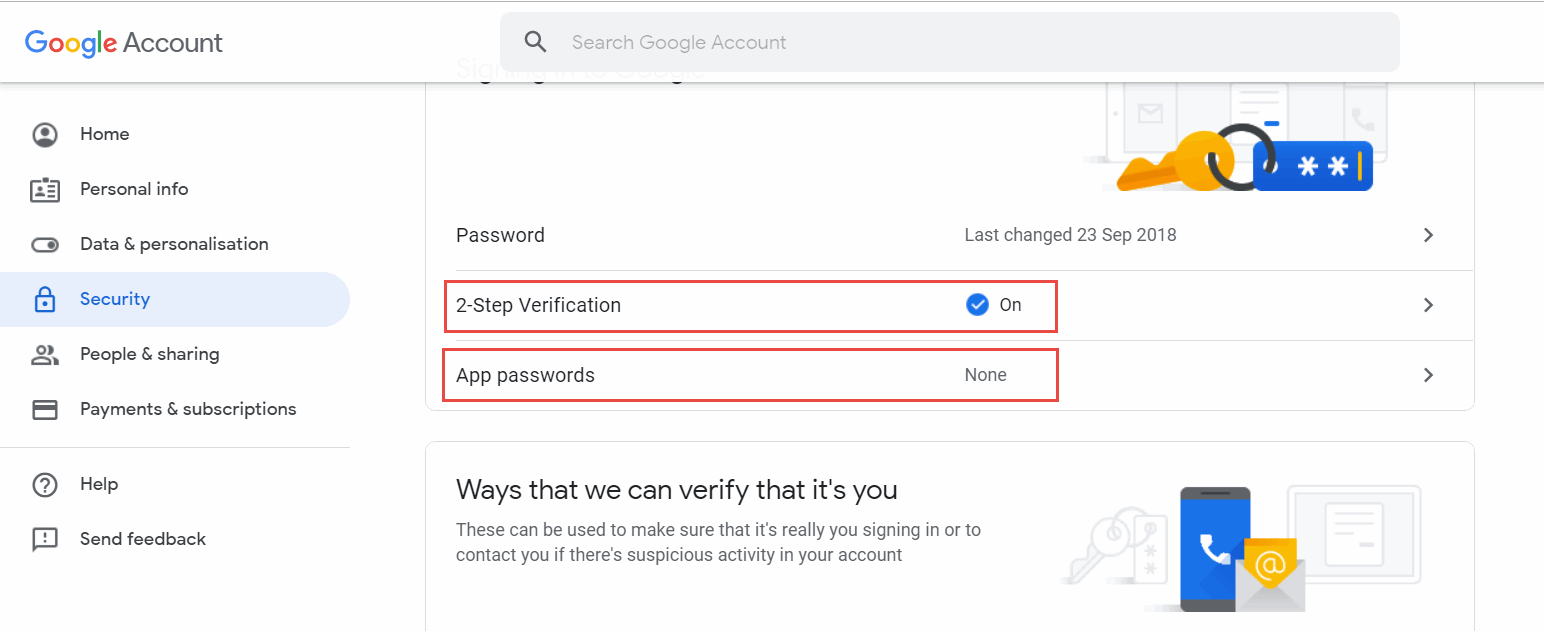
Once finished select the App passwords option to create new application. Select Other (custom name) option from the select app drop-down box.
 { width=350 }
{ width=350 }
Click Generate button. As the result the password is generated for the app. Copy this password as it will be used in the next step.
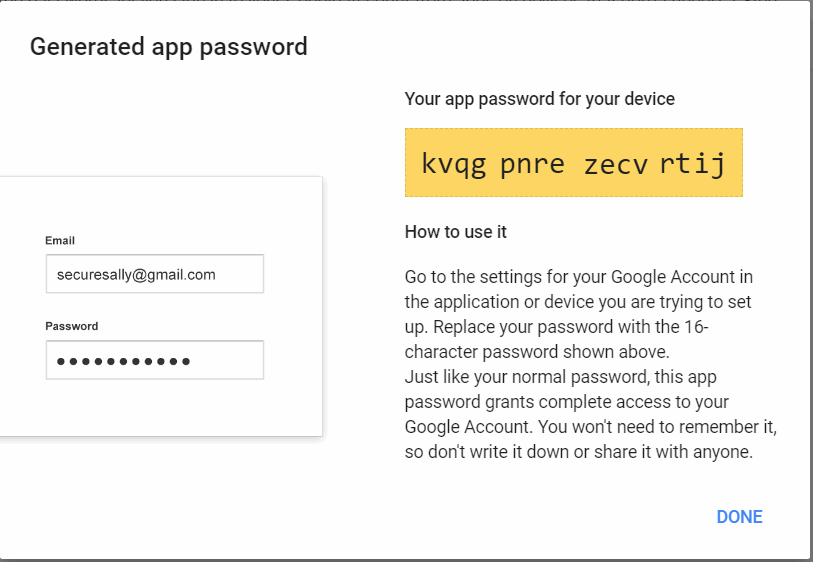 { width=350 }
{ width=350 }
Setting up e-mail alias
Open the e-mail page and select the Settings command from the drop-down.
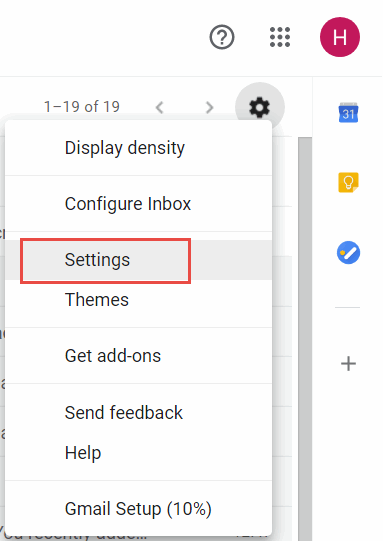 { width=350 }
{ width=350 }
Activate Accounts and import tab.
Locate Send mail as section and click Add another e-mail address link.

Specify the information about the other e-mail (i.e. the one you are creating alias for).
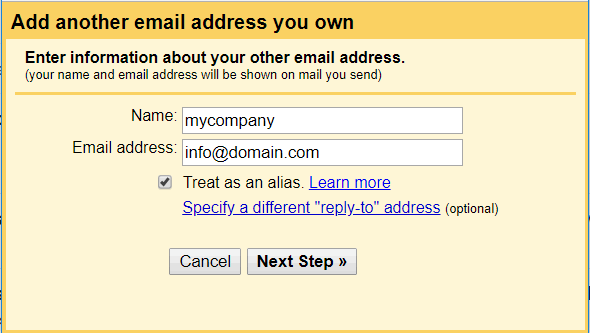 { width=450 }
{ width=450 }
Configure the smtp server. Set the value of SMTP server to smtp.gmail.com. User name is your gmail user name (not the custom domain name, i.e. the currently logged in user to gmail). Password is an app password generated in the previous step (not the gmail password).
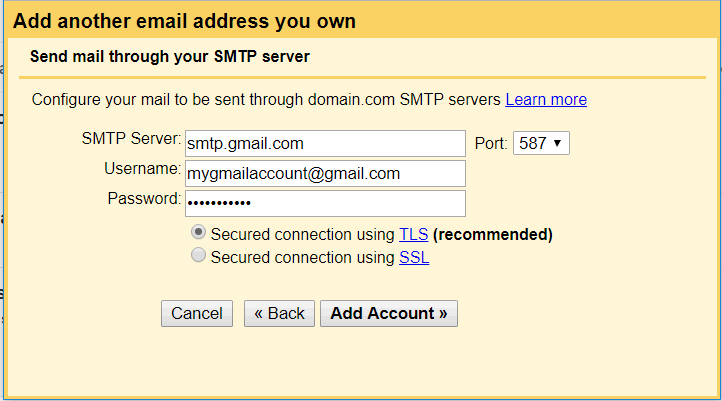 { width=450 }
{ width=450 }
As an optional step set the created alias as default option so e-mails will be sent using the alias by default.
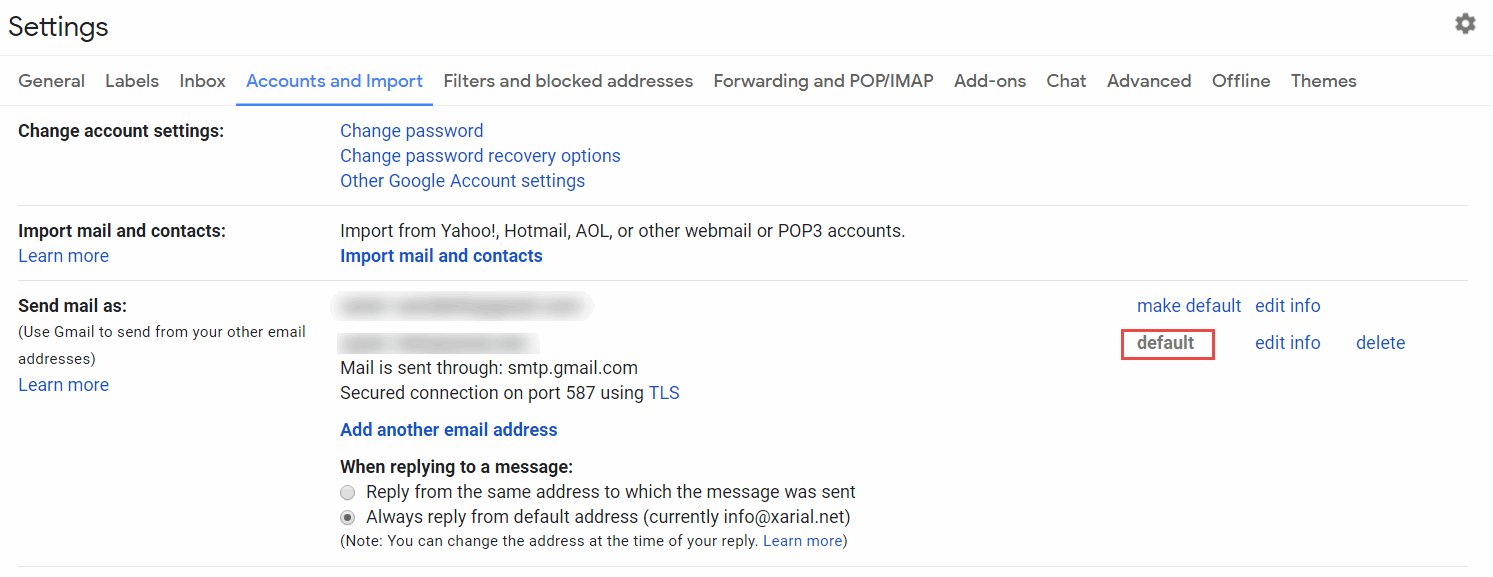
Now you can send e-mails with an alias and it will appear as e-mail with custom domain to the receiver instead of the @gmail.com e-mail.